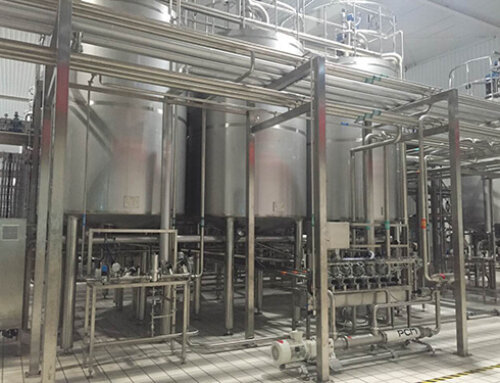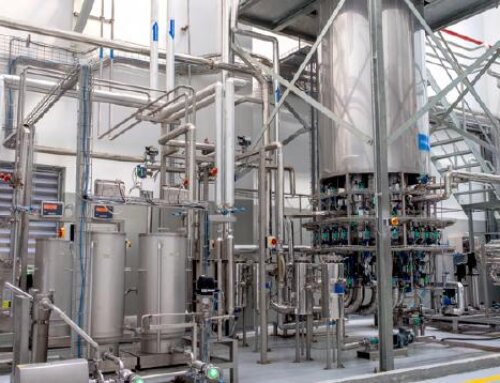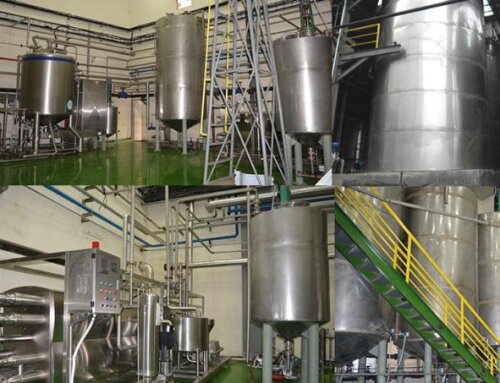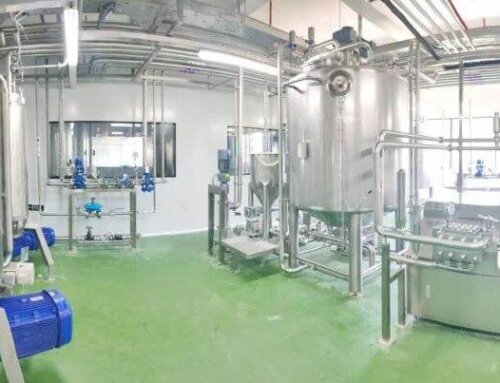OME Juice Process Technology Overview
The optimal mash enzymatic hydrolysis process is also called OME process, which is to add a specific enzyme preparation called mash enzyme to the fruit pulp before juicing. This mash enzyme is one compound enzyme preparation composed of pectinase, cellulase and hemicellulose, it can degrade the cell wall in fruit cells and hydrolyze the water-soluble pectin and insoluble pectin, which is beneficial to improve the juice yield without destroying the fruit pulp structure. Under certain circumstances, the juice yield of fruit can be increased by 10%-15%. The OME process is affected by various factors such as the type of enzyme preparation, fruit variety, maturity, processing method, enzyme addition amount, reaction time, reaction temperature, etc., The typical processing technique is to heat the pulp to 45°C-50°C, then add the mash enzyme according to the dosage recommended by the enzyme preparation supplier, and react for 1-2 hours.
OME Juice Process Technology Application
The mash enzymatic hydrolysis process is a new technology widely used all over the world, Pectinex Smash enzyme preparation developed by NOVOZYMES company is specially used to treat fruit pulp (apple, pear, berry, pomegranate, cherry, banana, pineapple, etc) and vegetable pulp (carrot and beet pulp), but also can effectively degrade soluble pectin and insoluble pectin. Its product characteristics determine that the product can work in a wider pH value and lower temperature conditions. The OME process is less suitable for the production of single strength high-quality cloudy and clear juices, as these products need to maintain their fresh flavor.
OME Juice Process Flowchart
The fresh fruit is washed and sorted, and then feed into the fruit mill. During the fruit crushing process, mash enzyme can be dosed, or mash enzyme can be dosed to the mash receiving tank, and then the fruit pulp is pumped into the belt press, hydraulic piston press, screw press or horizontal centrifuge juicer to obtain the juice. Then the juice can be pumped into the refining machine for further solid-liquid separation, and after that, the second enzymatic hydrolysis, ultrafiltration is adopted to obtain clarified juice, and finally the clarified juice is concentrated, sterilized, and filled into aseptic bags in drums or bins.

Optimal Mash Enzymatic Hydrolysis Process Advantage
- Improve the production capacity of equipment. Since the mash enzyme decomposes the pectin, cellulose and hemicellulose in the fruit pulp, it reduces the viscosity of the fruit juice, thereby changing the texture of the pomace, accelerating the outflow rate of the fruit juice, shortening the fruit pressing time, and improving the production capacity of the press. It is especially suitable for ripe fruit or fruit that has been stored for a long time, because such fruit has a lower juice yield.
- Improve juice yield. Due to the action of mash enzymes, the cell wall substances and pectin in the pulp or pomace are enzymatically hydrolyzed, which reduces the viscosity of the pulp and makes juice easier to flow out. At the same time, some cellulose and hemicellulose substances are decomposed into soluble small molecules under the action of enzymes, which increases the content of soluble solids in the juice. Experiments have shown that the OME process can increase the juice yield of by 5%-11%, and the total juice yield by 2%-10%.
- Increase the free-flowing juice of the fruit, easy to squeeze, get a drier pomace, easy to transport.
- Reduce the pectin content in fruit juice and reduce the amount of pectinase used for juice clarification.
- Improve pulp structure, reduce viscosity, and facilitate solid-liquid separation.
- It still has good activity at low temperature (10-20℃), and the action time is shorter (30min).
- Compatible with all types of juicers.




